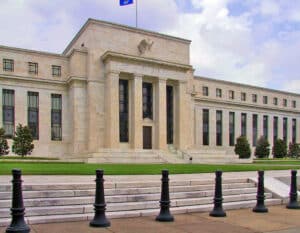Federal Reserve officials signaled Wednesday that they still expect to cut their key interest rate three times in 2024, fueling a rally on Wall Street, despite signs that inflation remained elevated at the start of the year.
For now, the officials kept their benchmark rate unchanged for a fifth straight time.
Speaking at a news conference, Chair Jerome Powell said the surprising pickup in inflation in January and February hadn’t fundamentally changed the Fed’s picture of the economy: The central bank still expects inflation to continue to cool, though more gradually than it thought three months ago.
The recent high inflation readings followed six months of steady slowdowns in price increases. Economists and Wall Street investors were looking for some clarification Wednesday about how the latest inflation reports were viewed at the Fed.
The January and February data, Powell said, “haven’t really changed the overall story, which is that of inflation moving down gradually on a sometimes bumpy road towards 2 percent,” the Fed’s target.
“The risks are really two-sided here,” Powell said. “We’re in a situation where if we ease too much or too soon, we could see inflation come back. And if we ease too late, we could see unnecessary harm to employment.”
In new quarterly projections they issued, the policymakers forecast that stronger growth and inflation above their 2 percent target level would persist into next year. Overall, the forecasts suggest that the Fed still expects an unusual combination: A healthy job market and economy in tandem with inflation that continues to cool – just more gradually than they had predicted three months ago.
For this year, the Fed projected that the economy will expand 2.1 percent – a big increase from its December forecast of just 1.4 percent. Yet at the same time, it still expects inflation to keep declining, though slowly.
Michael Gapen, chief U.S. economist at Bank of America, said the Fed’s updated projections suggest that it expects improvements in supply chains and the availability of workers to continue, allowing the economy to grow even as inflation slows to the Fed’s target. Rising immigration, for example, has made it easier for businesses to hire without having to rapidly raise pay.
“It looks to me like they’re embracing that supply-side story,” Gapen said. That means “you can cut while growth is solid, and you can cut while the labor market is strong.”
The financial markets cheered the message Wednesday from Powell and the Fed, with traders sending the Dow Jones industrial average surging 1 percent, to another all-time high.
“Inflation has come way down, and that gives us the ability to approach this question carefully and feel more confident that inflation is moving down sustainably,” Powell said. “It is still likely … that we will see that confidence and that there will be rate cuts.”
The Fed’s policymakers did make some small adjustments in their outlook: Their projections showed that in 2025, they now foresee only three rate cuts, down from the four they envisioned in their December forecasts.
One reason may be that they expect “core” inflation, which excludes volatile food and energy costs, to still be 2.6 percent by the end of 2024, up from their previous projection of 2.4 percent. In January, core inflation was 2.8 percent, according to the Fed’s preferred measure.
“There’s no urgency for them,” said Luke Tilley, chief economist at Wilmington Trust, a wealth management company. “They’ve got a strong economy, strong labor market.”
In most respects, the U.S. economy remains heathy. Employers keep hiring, unemployment remains low, and the stock market is hovering at record highs. Yet average consumer prices remain much higher than they were before the pandemic.
And there are signs that the economy could weaken in the coming months. Americans slowed their spending at retailers in January and February, for example. The unemployment rate has reached 3.9 percent – still a healthy level, but up from a half-century low last year of 3.4 percent. And much of the hiring in recent months has occurred in government, health care and private education, with many other industries barely adding any jobs.
Associated Press staff writer Alex Veiga contributed to this story.




 |
| 


